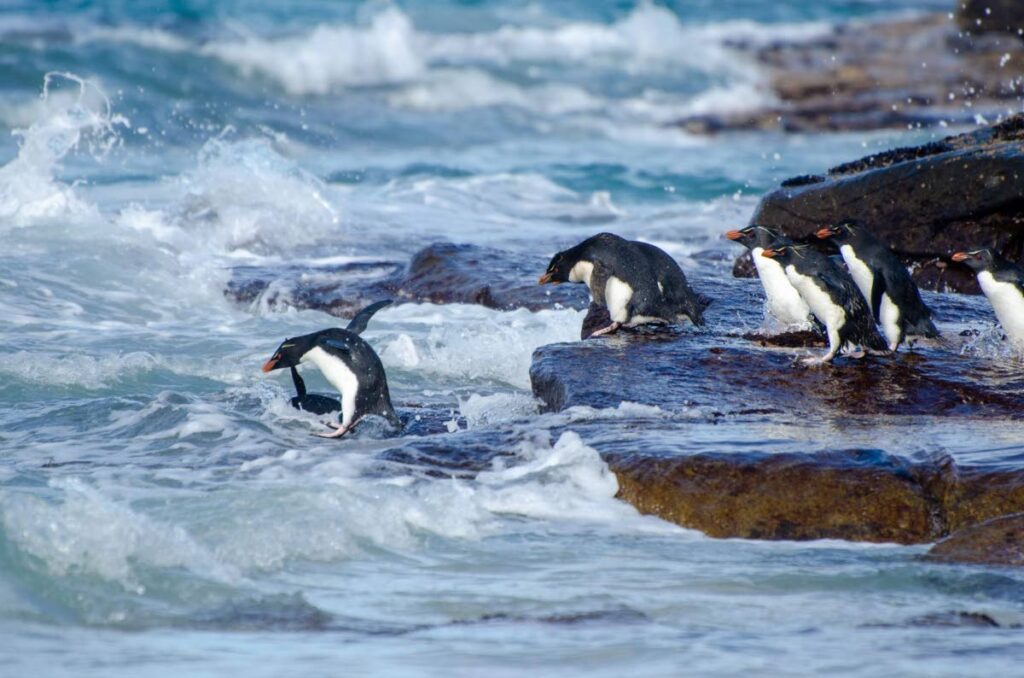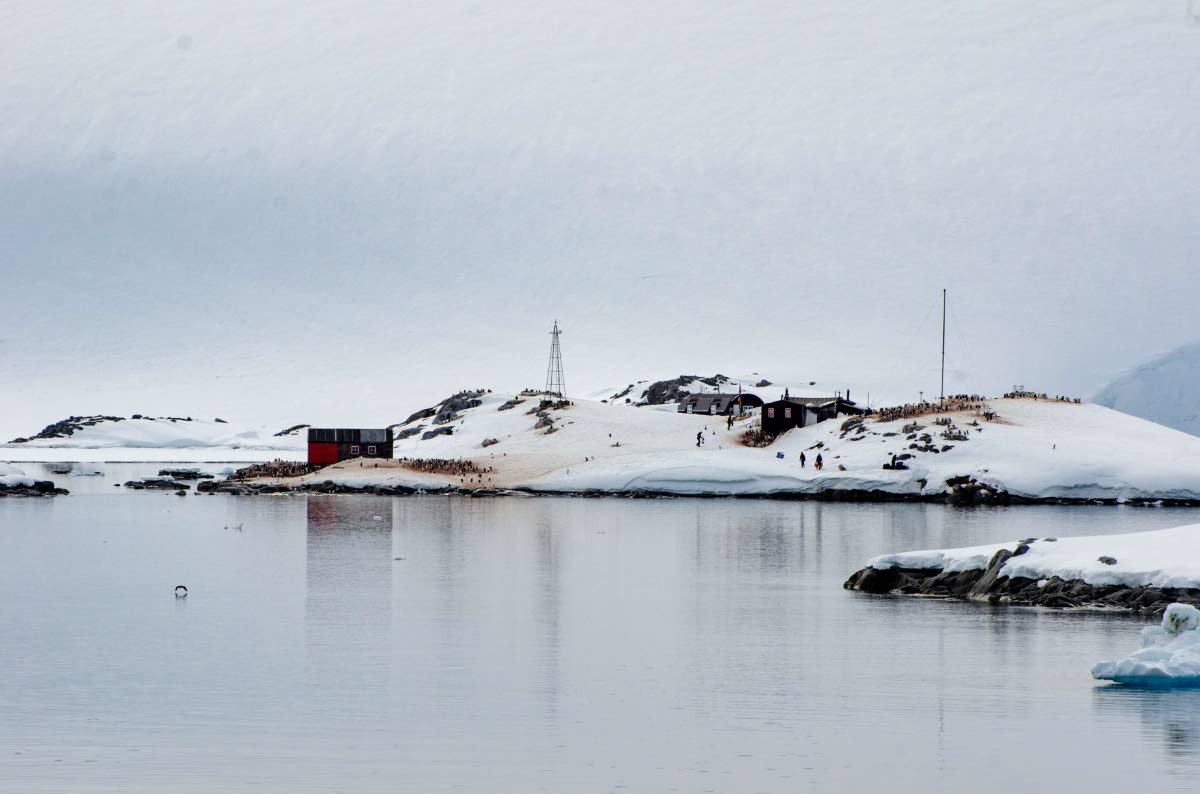Antarctic Stories: Leading for nature

Dr Anjani Ganase looks at leadership for changing the world and our relationship with nature.
As we head to Port Lockroy, a natural harbour where a British outpost station sits on the tiny Goudier Island, we see collective leadership being displayed in nature. We cruise to the island that is not more than 200m in diameter and observe that half the island is shared by several colonies Gentoo penguins, some with over 200 breeding pairs and the remainder is managed by the UK Heritage Trust which arrives every summer to safeguard the site for visitors and the penguins. As we climb onto the island along the designated path shovelled out by the station team, the penguins also march up the side of the island in a very orderly fashion walking along their penguin paths patted down by their feet. The penguins move together in small clusters and always with a leader to follow. If an obstacle arises, the leader may change to another path based on their positioning in the group. The penguins quickly adapt to follow along the better path. For each situation of uncertainty, any penguin can step up to lead.
The climate change challenge
I have been observing bleaching almost as long as I have been studying corals. In 2016, we resurveyed coral reefs of the Great Barrier Reef in the aftermath of the most severe bleaching event. We surveyed many remote reefs far from any human development. These reefs once covered in vibrant corals for kilometres and teeming with life, were now reduced to a field of dead skeletons. The heat was killing the corals.
Returning to Trinidad and Tobago, I knew my goal was not to just continue to monitor the death of corals but to assertively work to conserve them and protect at least some species so that they can persist in the future. However, the bleaching impacts are pervasive and move so much quicker than the understanding of our leaders.
In November 2023, as I was on my way to Antarctica to observe the devastations of climate change in the polar regions, Tobago and the wider Caribbean were reeling from a mass coral bleaching event. In the two-months prior, reports were made from concerned operators observing dying corals, sea fans, sponges, and even mass fish kills from a potential red tide triggered by the warm waters. The tropics were boiling as the poles were melting.
Leadership for our planet
The planet’s climate is rapidly changing, but the solutions to climate change require a systemic change to our relationship with nature, which can be painfully slow. The most immediate and practical solution is to shift from fossil fuels to alternative energy supplies, but unless we drastically change our relationship with nature, we will only be swapping one environmental degradation with another. (See deep-sea mining for rare earth metals for battery manufacturing).
Humans are not exempted from the rules of the global biome and no matter how much we consume, pollute, and distance ourselves from the natural environment around us, our impacts will ultimately negatively damage us and our future. Evidence of this is seen in conflicts, violent crimes, and even mental health epidemics which are social issues that have significant climate and environmental drivers.
Climate change is a complex issue that is layered with tremendous uncertainty and requires innovative solutions, but at the core of the issue is a willingness to change. We must realign our values with that of living with nature. To affect this, we require emergent leadership that deals with such complex issues by facilitating novel thinking and new action and “disrupts existing platforms of behaviour.” In these scenarios, it is important that leaders do not control or dictate, but host and facilitate by bringing people together to ideate and develop adaptive strategies in a form of collective leadership. Here, the host leader serves as the catalyst for action.
This is what the Homeward Bound Leadership Programme hopes to do by bringing women in STEMM together to connect with each other and other agencies of change (storytellers, artists and indigenous thinkers) from around the world. This form of leadership must extend beyond the political platforms and the boardrooms, into our living rooms, and community spaces. Leading for nature means developing positive social changes that result in a healthy environmental relationship. Nature is cyclical; seasons are tied to cycles of birth, growth, maturity and regeneration. Humans can contribute to the cycles of life by adapting towards sustainable living that gives back to nature and improves planet health. The solutions for climate change do not reside in a laboratory or in a policy, but in the collective thinking for a better life for all.
On board the IslandSky, the Homeward Bound community was made up of incredible leaders from all around the world, many of whom are already putting this leadership into practice. Leaders have rewritten European sustainable finance laws for transparent reporting on company sustainability impacts to their stakeholders, reporting beyond simply economic gains. Leaders are working in the US on climate justice, data analysts who are mapping suitable sites for renewable energy plants that considers social impacts and avoid the ills of the past where coal-fired plants were placed in poor, black communities. Leaders are at work in climate disaster management in Australia dealing with wildfires and flood management because of climate change and are recognising the social and mental repercussions that also need to be addressed. Leaders are embracing AI technology to create intricate models of future scenarios of climate change to advise on environmental management.
Leaders everywhere are at work, on the ground, changing organisations and communities. Where are the leaders in Trinidad and Tobago going to come from?
Reference:
Plowman, D. A., Solansky, S., Beck, T. E., Baker, L., Kulkarni, M., & Travis, D. V. (2007). The role of leadership in emergent, self-organization. The leadership quarterly, 18(4), 341-356.



Comments
"Antarctic Stories: Leading for nature"